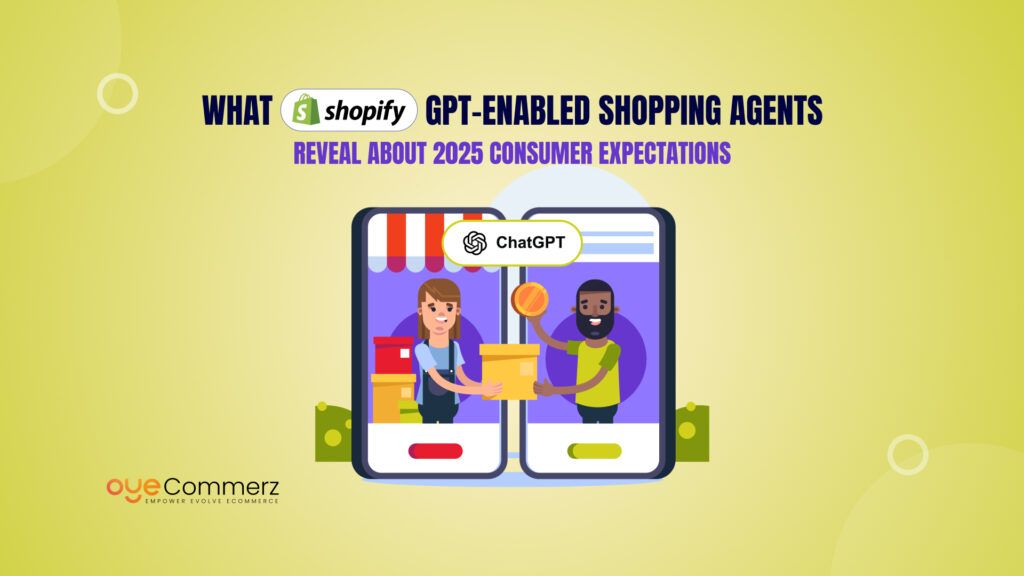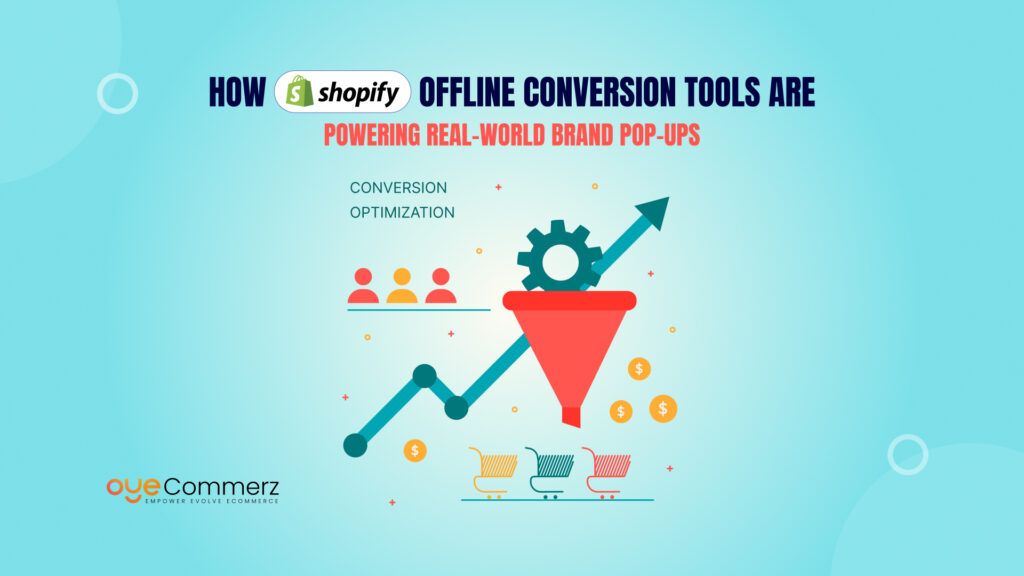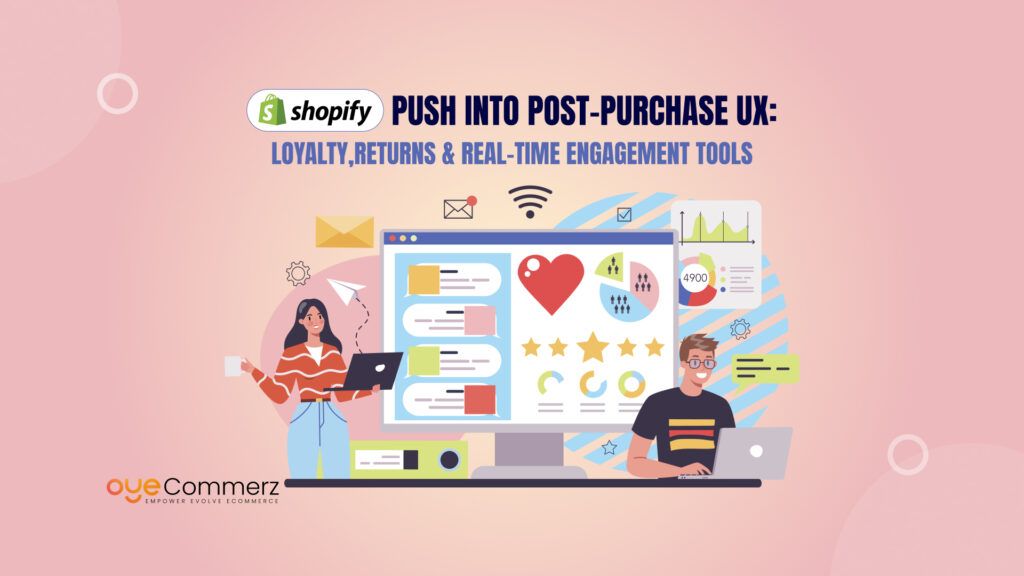Marketing campaigns in the current saturated e-commerce environment have to create high ROI, especially when using Shopify. With its many features, Shopify Campaign Manager offers marketers everything they need to create and manage successful campaigns. However, attaining high ROI is not an easy task because it involves struggling, and hardships, and can be surrounded by numerous problems. In this guide, we’ll explore the basics and beyond of achieving higher ROI out of your Shopify marketing initiatives and share some practical tips to improve your e-commerce marketing.
Table of Contents
ToggleThe Significance of Measuring ROI in Shopify Marketing
ROI is another financial metric that shows how lucrative an investment project is for its costs. For Shopify marketing campaigns, understanding and improving ROI is essential for several reasons:
Resource Allocation: High ROI suggests that the money used in marketing is being utilized in the right manner and thus budget can be utilized well. In this way, you guarantee that the whole money aimed is used to produce the greatest profit.
Performance Measurement: Marketing return on investment can easily be monitored hence proving useful for evaluating different marketing channels and techniques. They offer a view on which strategies are most effective in generating sales and those strategies require more focus.
Strategic Decision-Making: An understanding of ROI such as that presented here enables one to make welfare-enhancing decisions. Whenever it is about expanding successful campaigns or merely exiting failing campaigns, ROI data plays the best base for decision-making.
Budget Justification: By securing high returns on investments, firms can explain their spending on marketing to various stakeholders. Allows highlighting the usefulness and efficiency of campaigns and thus promotes further or even greater investment in marketing activities.
Why ROI Matters for Shopify Campaigns
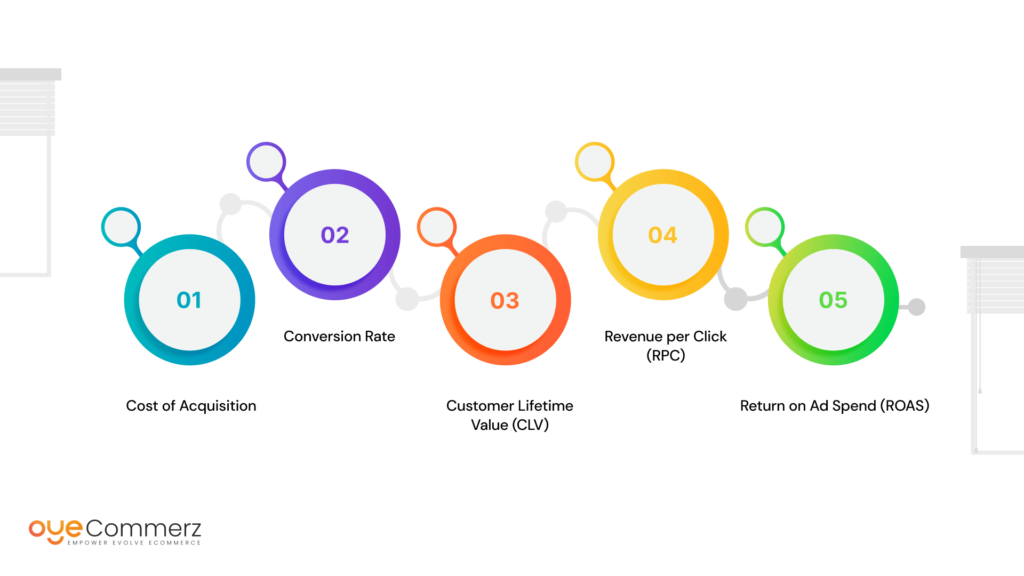
In the context of Shopify marketing campaigns, the ROI is not simply a metric, it’s the measure of the effectiveness of your marketing campaigns in translating efforts and costs into revenues. Key elements of ROI in Shopify campaigns include:
- Cost of Acquisition: This includes all costs involved in The customer acquisition cost defines every expense that revolves around getting a customer: advertising expense, content development, and campaign management, among others. Savings in acquisition costs when coupled with an increase or even a sustenance of the conversion rates, lead to a better ROI.
- Conversion Rate: This metric calculates the proportion of visitors, who achieved a defined target, for instance, a purchase. Higher conversion rates tend to mean that the marketing messages and techniques are well done.
- Customer Lifetime Value (CLV): CLV gives an estimate of the total amount of money a business stands to gain from a single customer all through his/her loyalty. The formation of campaigns that tend not only to sell products in the initial stages but also to make post-purchase sales also contributes to increasing the ROI.
- Revenue per Click (RPC): RPC quantifies the revenue income per click for marketing ads or links. Thus, the realisation is that ad copy and targeting can influence RPC and, consequently, produce a higher ROI.
- Return on Ad Spend (ROAS): This is a special ROI that tells the business the total amount of revenue realized for every dollar spent on the ad. Consequently, a higher ROAS was driving the ad spend more effectively.
The Ultimate Guide to Shopify Marketing

Ultimately, your Shopify marketing campaigns need to be perfect in order to gain significantly high ROI. Here’s how to create campaigns that deliver results:
Identify Your Target Audience
Knowing your customers, their needs, and wants is basic knowledge of any business. Collect data from customers in relation to their characteristics, their behaviour and their preferences using Shopify analytics tools. If you wish to improve user engagement and the conversion rate of your campaigns, make sure that you adapt the content based on the target audience.
Set Clear, Achievable Goals
Determine how success is going to look like for the campaigns that you are going to embark on. In any case, the objectives should be precise – for instance, to raise brand recognition, to drive traffic, or to increase sales: the accuracy of visioning is critical as it directly impacts the effectiveness of gauging real progress.
Choose the Right Marketing Channels
Shopify has links with different marketing platforms including; email, social and paid marketing. It is also crucial to remember which channels your audience spends their time in and where your spending will have the most effect. For example, if your target audience heavily uses Instagram, then there will be higher ROI for Instagram ads and working with the influencers.
Create Compelling Content
Creating compelling content is essential for driving engagement, but knowing how to tailor that content for maximum impact often requires expert insights. If you’re unsure how to elevate your content strategy, consider reading our guide to Choosing a Shopify Marketing Agency, which outlines how to find the perfect partner to craft high-converting campaigns.
Leverage Shopify Tools and Features
Marketing on Shopify is made easier by the numerous tools that Shopify provides to improve the campaigns that are run. Make available features like Shopify Email for the sending of targeted emails, Shopify Ads for paid marketing and Shopify Analytics for measurement. One can also extend additional functionalities through various third-party apps, as well as get more analysis.
Optimize for Mobile
Since most of the traffic to your Shopify store comes from mobile devices, make sure that your campaigns and your Shopify store reflect that. This involves factors such as responsive design, fast loading speed, and the design of the content for mobile devices. Since most of the traffic to your Shopify store comes from mobile devices, make sure your campaigns and your Shopify store reflect that. In fact, Statista predicts that by 2025, 77% of global e-commerce sales will be made via mobile devices.
Monitor and Adjust
It is recommended to carry out the analysis of the campaign’s performance regularly using Shopify tools. Monitor milestones and evaluate patterns and outcomes to make changes and improvements to a top-down chain strategy. Modifying certain aspects of your campaigns like the text on your advertisement, or the parameters of the target audience, can help optimize them for better results.
General Mistakes to Avoid in Shopify Marketing Campaigns
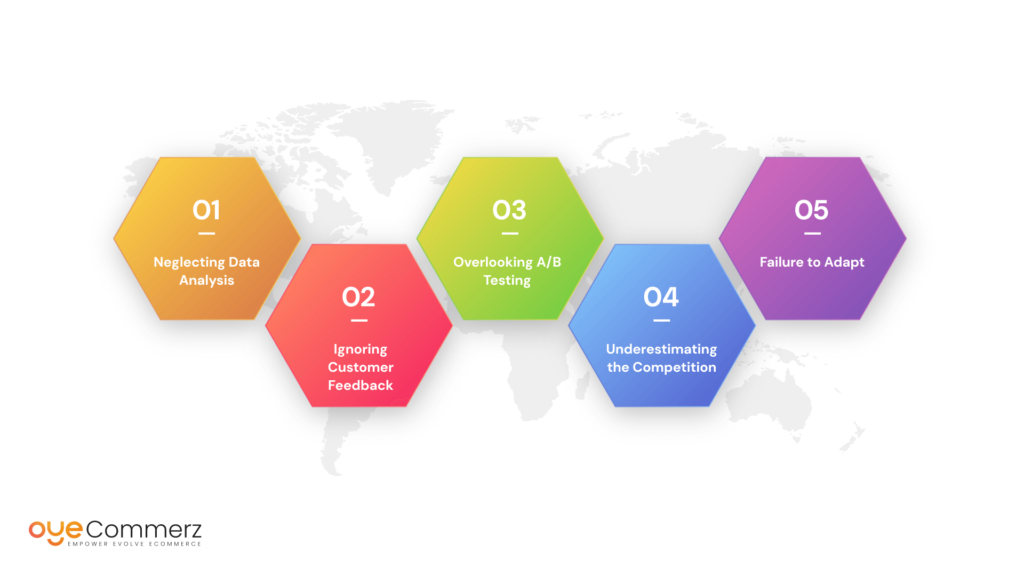
To maximize ROI, it’s essential to be aware of and avoid common pitfalls that can hinder campaign performance:
- Neglecting Data Analysis: The lack of analysis may lead to the failure to notice these areas where further tuning can be done. The performance indicators should be analyzed and its findings used in decision-making frequently.
- Ignoring Customer Feedback: Feedback from customers is important in helping one to enhance his/her campaigns. It is essential to pay attention to the returns, polls, and posts on the social media platform to embrace the needs and preferences of the customer.
- Overlooking A/B Testing: Currently, A/B testing involves conducting the comparison of the two variations of the campaign element the result being the one which performs well. Not paying attention to A/B testing will help you lose sight of the best approach to target your audience.
- Underestimating the Competition: Be obsessed with your competitors’ campaigns and strategies. Knowing this will give you a head start and enable you to differentiate the campaigns that you run or propose.
- Failure to Adapt: Often it is an important facet of digital marketing since technological advancement is always changing. This means that small business owners should always keep themselves informed about the latest trends in the market and be ready to incorporate the changes a business has to make to ensure that it yields the highest rate of return on investment.
New Trends That May Affect ROI
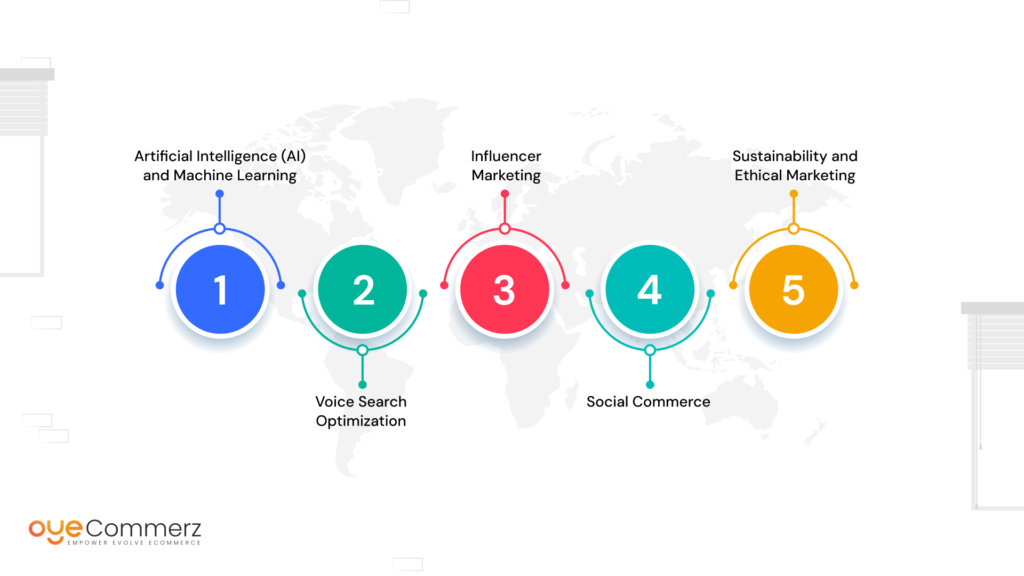
Usually, the marketing landscape is constantly changing so, adaptation to the new trends directly affects your Shopify marketing ROI. Here are some trends to watch:
Artificial Intelligence (AI) and Machine Learning
AI and machine learning are great tools that are underutilized in the current forms of marketing as they are more effective and efficient. With the help of AI, applications can work with large amounts of information, evaluate the customer’s actions, and optimize marketing processes, which leads to increased ROI.
Voice Search Optimization
The current trend of having voice assistants such as Alexa and Google Assistant improves visibility for voice search hence increasing the traffic flow to your Shopify store. This can be gotten to mean improved conversion rates and total return on investment.
Influencer Marketing
Using influencers in marketing has become one of the most popular trends, which succeeds in generating a lot of engagement and sales. This is a good insight to collaborate with influencers that are relevant in your niche so that you can get additional traffic and better returns through what they recommend.
Social Commerce
Many social media sites are now doing what is referred to as omnichannel or integrating selling capabilities where users can buy products on the platform. Hence, the utilization of social commerce can improve the aspects affecting the customer such as convenience and ROI.
Sustainability and Ethical Marketing
People are now quite sensitive to sustainability and ethical consumerism. Regarding the consequences for the ROI, promoting awareness about your brand’s support for these values may trigger favourable purchase decisions from targeted customers.
For businesses looking for the best in Shopify marketing, we’ve compiled the Top 10 Agencies for Shopify Marketing that can help take your campaigns to the next level.
Transform Your Shopify Marketing Campaigns with OyeCommerz!
At OyeCommerz, we specialize in crafting data-driven, high-impact strategies tailored to your unique business needs. Our team of experts will guide you through every step, from setting clear goals to leveraging advanced tools and optimizing performance. Don’t settle for mediocre results. Partner with us to unlock the full potential of your marketing investments and drive significant growth.
Contact OyeCommerz today and let’s elevate your Shopify marketing campaigns to new heights!
Contact to Migrate your Site to Shopify Now
Conclusion
It is important to understand that to reach high ROI in Shopify campaigns, you should follow a proper strategy, make wise decisions, and address constant optimization. This is because when you know ROI metrics, create strategic campaigns, and learn how to avoid common mistakes with the help of a professional Shopify advertising agency, while keeping track of new trends, you will be on the right path to leveraging your marketing strategies and achieving great business success. Take advantage of these approaches to effectively harness the power of Shopify and optimize your efforts depending on the result you want to get from your marketing campaigns.


